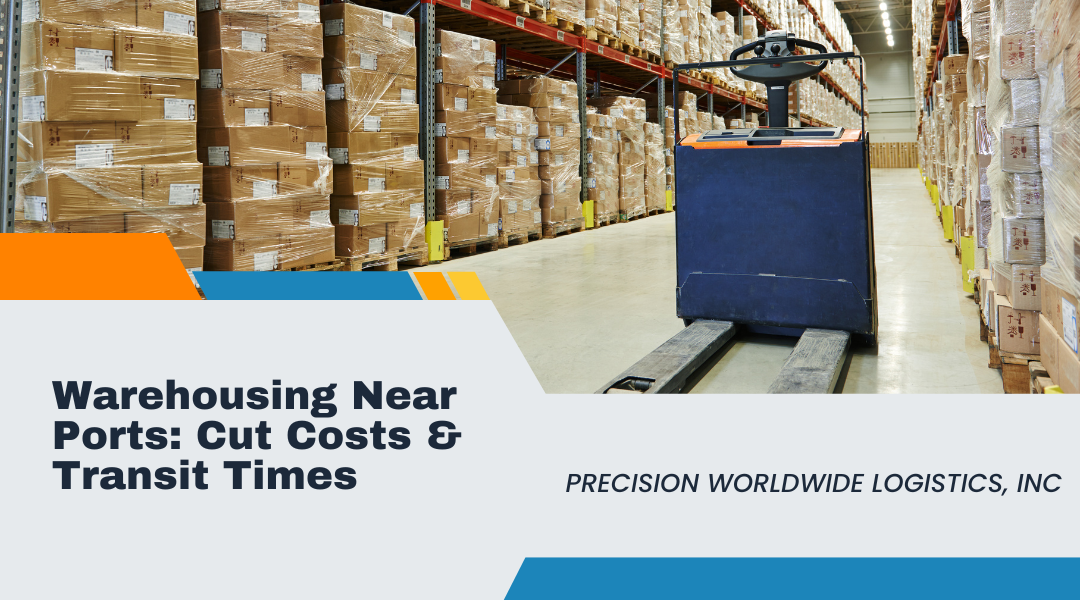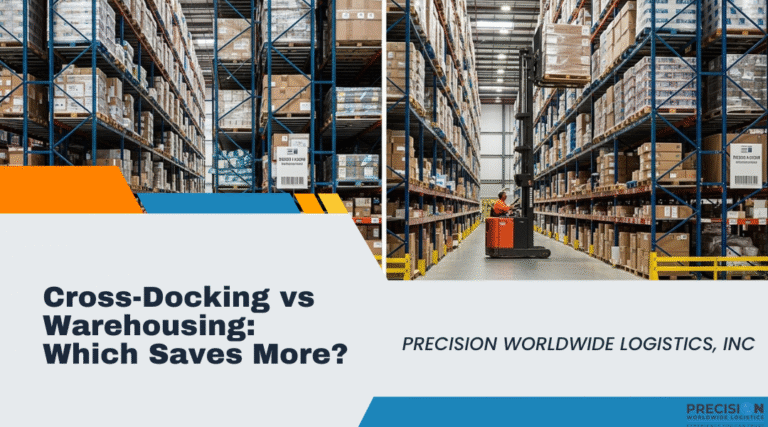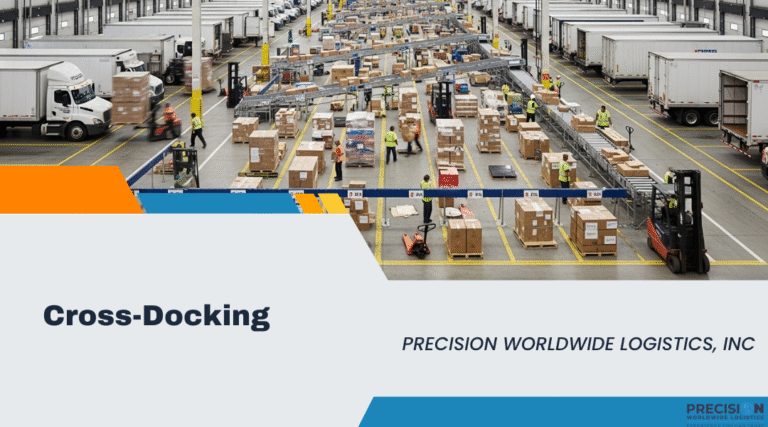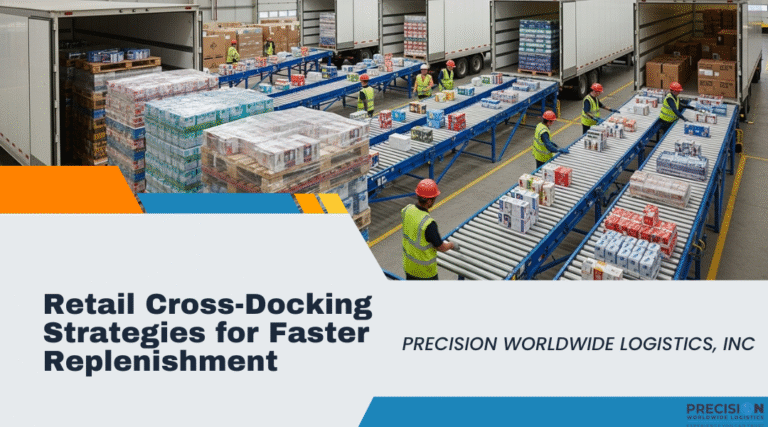For companies navigating complex supply chains, warehouse location is a critical factor that directly impacts transit times and operational efficiency. Warehousing near ports significantly reduces the distance goods must travel between ships and storage, cutting transit times and lowering transportation costs. This strategic proximity helps businesses respond faster to demand fluctuations and maintain smoother supply chains.
Precision Worldwide Logistics, Inc., based in La Mirada, California, leverages its port-adjacent warehousing to enhance freight movement and distribution speed. By positioning their facilities close to major ports, they optimize drayage and transloading processes, ensuring quicker turnaround and improved reliability for their clients. This approach supports streamlined logistics that are essential in today’s fast-paced market.
The company’s asset-based model allows it to maintain control over the entire transportation chain, further boosting efficiency around port operations. For businesses seeking timely delivery and cost-effective solutions, warehousing near ports offers a clear competitive advantage.
The Role Of Warehouse Location In Supply Chain Efficiency
Warehouse location directly impacts how quickly and cost-effectively goods move through the supply chain. Decisions about site placement affect delivery speeds, transportation expenses, and overall responsiveness to market demands.
Why Geography Impacts Delivery Speed
Geography determines the physical distance goods must travel from the warehouse to customers or retailers. Shorter distances reduce transit times, allowing faster order fulfillment and improved service levels.
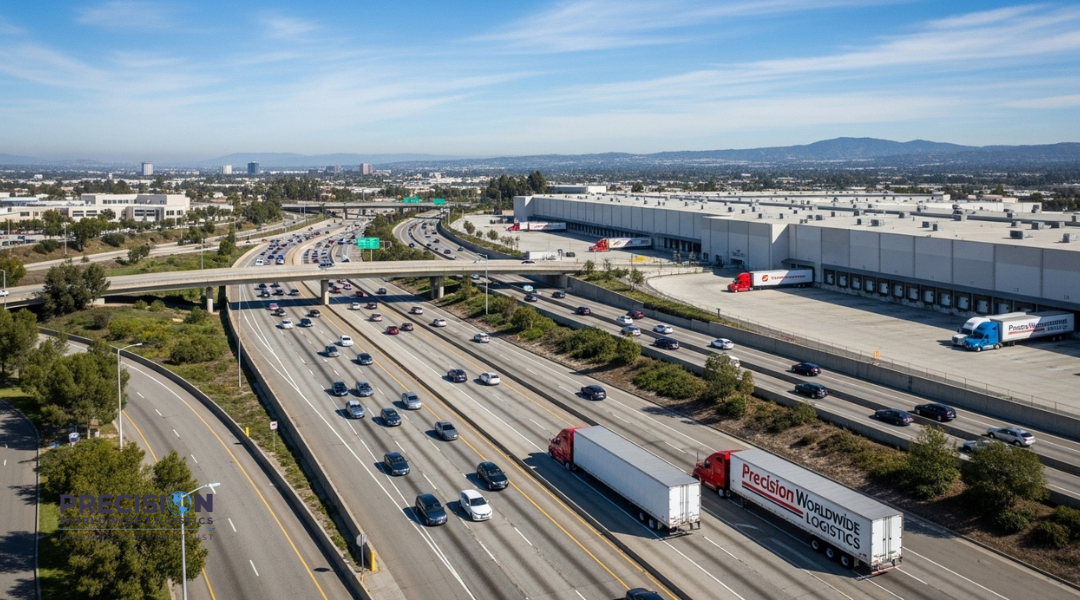
Geographic factors such as traffic patterns, road quality, and regional infrastructure also influence delivery speed. Warehouses situated in well-connected areas can avoid delays caused by congestion or poor routes.
For a trucking company like Precision Worldwide Logistics, Inc, being close to major urban centers in California means fewer delivery disruptions and quicker turnaround times for customers across the West Coast.
How Proximity To Key Transport Hubs Affects Costs And Lead Times
Warehouses near airports, major highways, and ports benefit from lower transportation costs due to decreased fuel consumption and reduced driver hours. This proximity often shortens lead times by enabling faster loading and unloading.
Being close to key hubs also allows for more flexible scheduling. Freight can be rerouted quickly if delays occur elsewhere, minimizing supply chain interruptions.
For example, warehouses near Los Angeles and Long Beach ports reduce reliance on long-haul trucking from inland distribution centers. This cuts expenses related to transit and handling.
The Strategic Advantage Of Being Near West Coast Ports
Warehousing near West Coast ports offers critical strategic benefits by serving as a direct link to international trade routes. Imports can be transferred immediately to trucks, reducing dwell time.
This close connection to ports enables faster replenishment cycles and better inventory management. It also supports just-in-time deliveries, which lowers inventory carrying costs.
For Precision Worldwide Logistics, Inc, locating warehouses near these ports means optimized transit times and cost savings from streamlined customs clearance and quicker last-mile delivery. This enhances both operational efficiency and customer satisfaction in a competitive logistics market.
How Warehousing Near Ports Reduces Transit Time
Locating warehouses close to ports streamlines critical steps in the shipping process. This proximity accelerates container handling, shortens local transport durations, and cuts down waiting periods at terminals. These factors combine to improve supply chain speed and reliability for businesses like Precision Worldwide Logistics, Inc.
Faster Container Unloading And Distribution
Warehousing near ports enables immediate transfer of cargo from ships to storage facilities. Containers offloaded can be quickly moved to nearby warehouses without the delays caused by long-distance transport. This reduces bottlenecks and allows goods to enter the distribution network faster.

Quick access to port terminals also helps coordinate unloading schedules more effectively. This means shipments can reach customers sooner and be processed for final delivery with less time wasted in transitional steps. Faster unloading directly supports tighter delivery timelines.
Reduced Drayage And Local Transport Time
By minimizing the distance between ports and warehouses, companies cut drayage costs and transit time significantly. Shorter drayage routes reduce fuel consumption and vehicle operating hours, enhancing overall efficiency. This is especially important in congested urban areas like La Mirada.
Reduced local transport also decreases exposure to traffic delays and regulatory restrictions. It enables logistics providers to maintain consistent schedules and improve supply chain responsiveness. Lower drayage time translates into faster movement of goods from port to warehouse and then on to customers.
Minimized Dwell Time At Terminals
Warehousing close to ports helps reduce the inventory dwell time at terminal yards. When warehouses are distant, containers often wait in terminal storage as trucking capacity or schedules align. Near-port warehouses allow faster pickup and clearance of cargo, avoiding costly terminal delays.
Minimizing dwell time lowers storage fees and port congestion, improving overall throughput. This allows companies to better manage inventory flow during peak periods or disruptions. In turn, it supports more predictable lead times in the shipping process.
Business Benefits Of Port-Adjacent Warehousing
Locating warehouses near ports offers distinct advantages for managing inventory, controlling costs, and meeting delivery commitments. These benefits stem from reduced transport times, improved visibility into shipments, and more responsive supply chain operations.
Improved Inventory Turnover And Order Fulfillment
Warehouses close to ports enable faster unloading and storage of incoming goods. This proximity shortens the time products spend in transit, allowing for quicker restocking and reduced inventory holding periods. Companies can better match supply with demand spikes by leveraging real-time shipping data directly from the port.
Faster access to goods reduces delays in order fulfillment. This improves customer satisfaction through more reliable delivery windows. Additionally, port-adjacent storage helps absorb disruptions like port congestion or weather delays, maintaining steady inventory flow and minimizing backorders.
Lower Transportation And Fuel Costs
Storing goods near ports significantly cuts the distance freight must travel by truck or rail before reaching distribution centers or retail locations. This decrease in transit length translates directly into lower fuel consumption and reduced trucking expenses.
Less reliance on long-haul trucking also lowers the risk of delays caused by traffic, mechanical issues, or driver shortages. The cost savings from these efficiencies often offset warehousing expenses. Additionally, reduced transportation contributes to lower carbon emissions, supporting corporate sustainability goals.
Flexibility In Meeting Customer Expectations And Delivery SLAs
Warehouses positioned near ports provide greater agility in responding to customer demands. Companies can quickly adjust inventory levels in response to market trends or seasonal fluctuations without waiting for extended delivery times.
This flexibility supports adherence to strict service level agreements (SLAs) by enabling rapid order processing and shipment. When delays occur at the port or along transit routes, local warehousing acts as a buffer, maintaining smooth operations. It empowers logistics teams to manage exceptions effectively and prioritize high-value shipments to meet customer expectations.
Challenges Of Distant Warehousing And Long-Haul Transport
Locating warehouses far from ports introduces several operational challenges that affect supply chain efficiency. These include increased risks in transit, elevated costs, and difficulties in managing time-sensitive deliveries.
Increased Risk Of Delays And Damage
Long-haul transport between distant warehouses and ports exposes freight to a higher likelihood of delays. Factors such as traffic congestion, weather disruptions, and handling at multiple transfer points can extend transit times unpredictably.
Extended travel distances also increase the risk of cargo damage. More handling events and longer transit duration subject goods to vibrations, shocks, and environmental factors that can compromise product integrity.
Delays near ports cause bottlenecks, especially when goods must meet scheduled shipments or customer deadlines. These hold-ups can ripple through the supply chain, affecting inventory availability and customer satisfaction.
Higher Operating And Labor Costs
Warehousing locations far from ports result in increased transportation expenses. Longer distances demand more fuel, maintenance, and driver hours, directly raising overall logistics costs for businesses.
Operating warehouses in remote areas may also increase labor costs. It can be more difficult to find qualified staff, leading to higher wages or turnover. Additional expenses arise from managing multiple warehouse sites to mitigate geographic challenges.
Equipment utilization drops when trucks spend more time traveling rather than loading or unloading. This inefficiency adds to cost burdens for trucking companies like Precision Worldwide Logistics, Inc.
Impact On Time-Sensitive Shipments And Just-In-Time Models
Distant warehousing complicates the execution of Just-In-Time (JIT) inventory strategies, where precise timing is critical. Longer transit times reduce flexibility and increase vulnerability to scheduling disruptions.

Businesses relying on rapid replenishment risk stockouts or overstock if deliveries are delayed. This inconsistency can inflate safety stock levels, negating cost savings intended by JIT.
Pressured delivery windows for perishable or high-demand products suffer when goods travel long distances from ports. Maintaining reliable service levels becomes more complex as transit variability grows, affecting overall supply chain responsiveness.
Case Study: Why Precision Worldwide Logistics, Inc Chooses Strategic Port-Close Locations
Precision Worldwide Logistics, Inc positions its warehouse near major ports to optimize transit times and enhance logistics efficiency. This location allows the company to support importers and exporters effectively while reducing delivery delays and costs through immediate access to key transport routes.
Our La Mirada Facility’s Strategic Positioning
The La Mirada warehouse is situated just miles from the ports of Los Angeles and Long Beach, the busiest in the United States. This proximity enables rapid transfer of goods from ships to trucking routes without the delay typical of longer hauls.
The facility leverages this position to streamline container drayage operations, ensuring faster turnaround times for shipments. It also minimizes risk from port congestion by offering an alternative logistics hub nearby. The layout and technology in the warehouse support quick loading and unloading, further enhancing efficiency.
Success In Supporting Importers & Exporters In California
Precision Worldwide Logistics, Inc’s location directly benefits importers and exporters by shortening the supply chain lead time. Goods arriving at the ports can be moved swiftly to the La Mirada warehouse for inventory management or direct distribution.
This speed is crucial for clients who demand timely delivery within California and beyond. The company also manages customs documentation and regulatory compliance close to the port, facilitating smoother clearance processes. This integrated service helps reduce storage and demurrage costs for their clients.
Real Results: Reduced Delivery Timeframes For Clients
By warehousing near the ports, Precision Worldwide Logistics, Inc achieves measurable reductions in delivery times. Clients report faster order fulfillment due to the minimized transit between ship unloading and final delivery points.
Using this approach, the company has cut several days from typical shipping schedules, improving supply chain responsiveness. This reliability supports businesses in managing inventory more effectively and meeting customer demand promptly. The proximity also lowers operational expenses related to fuel and labor, strengthening cost savings for users.
Warehousing Near Ports Vs. Inland Locations: A Comparative Overview
Warehouse location affects costs, service speed, and the ability to respond to inventory needs. Choosing between port-proximate and inland sites involves balancing transportation expenses, delivery times, and risk exposures.
Cost Analysis: Short-Haul Vs. Long-Haul
Warehousing near ports reduces transportation costs by minimizing inland freight distances. This proximity allows goods to move quickly from ships to warehouses, cutting expenses related to fuel, labor, and time-sensitive handling.
Inland warehouses incur higher long-haul costs due to increased distances between ports and storage. While inland sites might offer lower real estate and labor costs, these savings can be offset by higher distribution expenses.
Key cost factors:
- Fuel and trucking expenses
- Labor costs for handling and transit
- Real estate and facility expenses
Short-haul from port warehouses generally leads to lower overall logistics costs for high-volume shipments, especially in tariff-heavy environments where handling efficiency matters.
Service Speed And Flexibility Differences
Warehouses near ports enable faster turnover because inventory can be unloaded and accessed promptly. This speeds up order fulfillment and reduces lead times, critical for businesses focused on time-sensitive delivery.
Inland locations offer flexibility through easier access to broader labor pools and potential for expansion. However, the additional transit time required for moving goods from ports can delay delivery schedules and complicate supply chain timing.
Port proximity enhances responsiveness to sudden demand shifts, while inland warehouses sometimes rely on more planning and buffer stock to manage variability.
Inventory Risk And Responsiveness Metrics
Storing inventory near ports reduces risk by limiting exposure to multiple transport steps. Fewer handlings decrease damage and loss chances during transit.
However, port-adjacent warehouses might face congestion risks or disruptions due to port activity. Inland warehouses, while less exposed to port bottlenecks, require longer supply routes that can affect inventory replenishment speed.
Measuring responsiveness involves tracking:
- Order cycle time
- Stockout frequency
- Inventory turnover rates
Overall, port-centric storage promotes quicker stock replenishment, whereas inland facilities may require higher safety stock to maintain service levels.
Choosing The Right Warehousing Partner Near Ports
Selecting a warehousing partner close to key ports requires attention to several critical factors. Proximity alone is not enough; expertise in handling port logistics, seamless integration with trucking services, and dependable operational capabilities define a strong partner. These elements collectively reduce transit times and streamline distribution.
What To Look For In A Port-Proximate 3PL Provider
A 3PL provider near ports should offer immediate access to major shipping terminals and have experience managing customs-clearance processes. They must handle high volumes of container traffic without delays.
Key characteristics include:
- Efficient cargo handling combined with real-time inventory tracking
- Strong relationships with port authorities and regulatory knowledge
- Capacity to support various cargo types, especially intermodal containers
- Flexible storage options to adjust for fluctuating shipment volumes
These ensure faster unloading, processing, and relocation of goods, minimizing bottlenecks that commonly occur near busy ports.
Importance Of Integration With Drayage And Trucking Services
Seamless coordination between warehousing, drayage, and trucking operations is essential for minimizing delays. When a warehouse partner integrates closely with drayage providers and trucking fleets, it creates a continuous flow from ship to final destination.
This integration provides:
- Precise scheduling to avoid container dwell times
- Faster turnaround for trucks at warehouses and ports
- Real-time communication across all transportation stages
- Reduced transportation costs due to coordinated routing
Such collaboration significantly cuts transit times and enhances supply chain reliability.
Why Precision Worldwide Logistics, Inc Stands Out
Precision Worldwide Logistics, Inc leverages its strategic location near major Southern California ports to reduce transit delays. It combines comprehensive warehouse management with its own trucking fleet, ensuring tight control over drayage and last-mile delivery.
Their advantages include:
- Warehousing designed for quick port container unloading and staging
- Advanced tracking systems providing end-to-end shipment visibility
- Dedicated drayage services aligned with warehouse operations
- Expertise in regulatory compliance and cargo handling
This synergy cuts unnecessary freight movements, supports efficient customs processes, and delivers consistent on-time performance.

